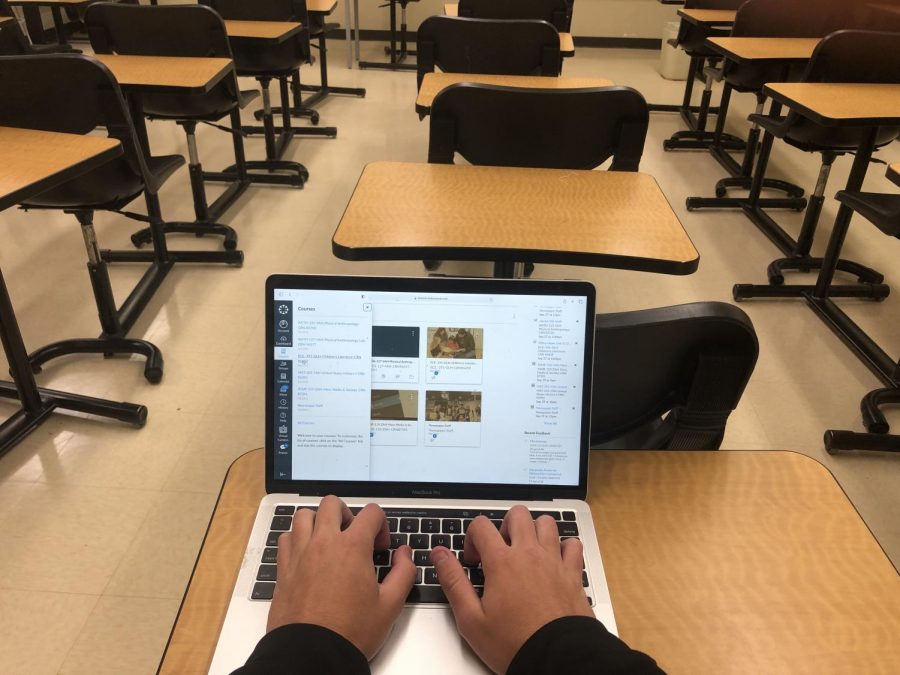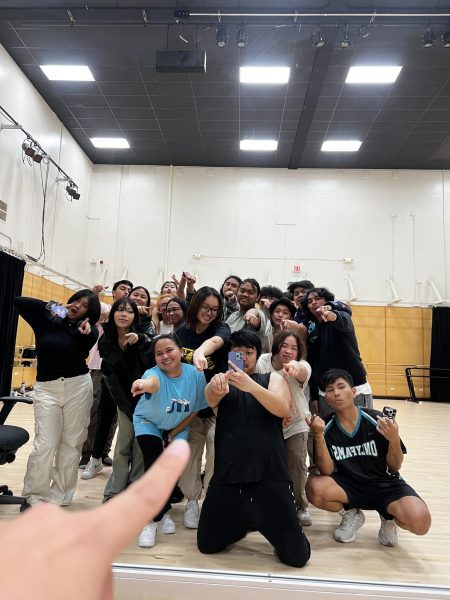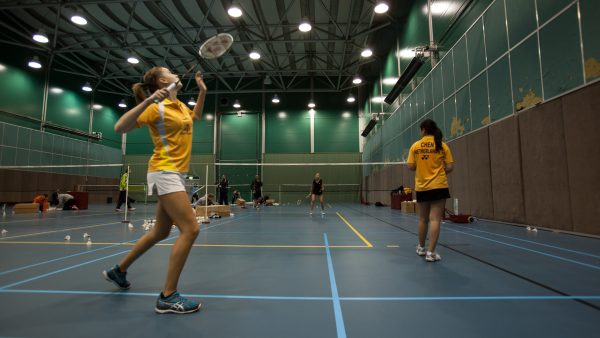HyFlex Learning: a flexible alternative to traditional education
Is HyFlex Learning viable to implement in the district?
HyFlex classes can be blended online and in-person to suit certain needs for students
HyFlex learning—No, these are not yoga classes.
HyFlex classes use a hybrid course design that allows students to choose their preferred form of attendance. Students can attend classes synchronously or online without physically attending class. This flexibility creates greater options for students who either want person-to-person attention, have circumstances which make being on-campus difficult or would prefer to use a combination of attendance options. Think of it as having the choice to do yoga in your pajamas at home or by joining fellow limber lovers in a mirrored enclosure.
Implementing HyFlex courses does take some work. The design of a HyFlex curriculum can be time-consuming and takes some technical know-how. Logistical and computer related issues may arise when delivering classes via an online platform. Teachers have to address both the live classroom and camera locations which can make for discursive, bilateral lectures. Equipment needed to produce HyFlex classes like microphones and video cameras are expensive. Conversely, a good yoga mat runs between $15 and $30.
When Skyline teachers were asked to give their opinion on HyFlex teaching, they were open to the idea. However, it was apparent to them that a lot of equipment would need to be installed and logistical problems would need addressing.
“The thing we haven’t worked out yet is there’s no way for people who are connecting on Zoom to interact with the people who are physically present on campus,” said Kim Saccio, assistive computer technology specialist for the Educational Access Center (E.A.C.) at Skyline College.
Even when impediments like these are worked out, Saccio said that the quality of the education was dependent entirely on the instructor and how comfortable they are with technology. She thought that the people who were tech savvy would flourish, and those who were not would probably opt not to teach HyFlex courses. She added that if an instructor did not know how to teach HyFlex courses well, nobody would force them to do it.
Right now, there are not enough classrooms at Skyline College equipped to enable a robust HyFlex learning platform. There might be four or five tops, Saccio thinks. To this end, Dr. Michael Cross, professor of English and literature for Skyline College, wondered whether HyFlex options could be scaled up for all students if the budget for extremely expensive technology upgrades only covered a handful of classrooms. Cross speculated that if only a dozen HyFlex classes were running at any one time, they would serve only about three percent of the students.
“This promises to be a logistical nightmare for administrators, but I don’t think any of these foreseeable difficulties are deal breakers,” Cross said.
One advantage of conducting HyFlex classes that are not yoga classes (or not any modern dance classes for that matter) is that you don’t have to teach in a leotard. Both Cross and Saccio were not asked to give their opinions on this particular benefit.
Tips for conducting a successful HyFlex class include:
- Making sure students are engaged in a single-learning community, regardless of how they participate.
- Setting expectations in the syllabus and in class.
- Ensuring that students understand the concept of a blended course and the relationship between the classroom and online components.
- Communicating to students how they should participate for both in-person and online, synchronous sessions.
- Recording sessions for students to review later.
- Using a TA to monitor the online portion of the class.
Beyond the matters of classroom implementation, HyFlex classes present some administrative issues. Cross said that having the option to teach in the classroom, online or a mixture of the two was important for faculty and staff; notwithstanding, these options may be harder to negotiate in terms of scheduling, contract, etc.
Even with the push to return to in-classroom instruction, HyFlex teaching is not required. Teachers have academic freedom, and the administration cannot force them to work in a HyFlex modality. It simply exists as a viable option for teachers who want to use it, and the administration will support it.
Looking to the future, Cross said that he always put students at the center of these conversations about learning options. He believes that it is important to think beyond what currently exists.
“The key, I’d argue, is a question of imagination,” said Cross. “Is it possible to imagine a college that functions outside of the temporal scheduling dilemmas that have fully conditioned our in-person experiences at the college up to now? Is it possible to imagine a college experience that is less contingent on scheduling and more open to embracing the complex lives of students, faculty and staff?”
Saccio, who does a lot of student-teacher support, recognizes that the future of HyFlex teaching will depend on the particular course material and the individual skillsets of the instructors. She has assisted numerous teachers who needed a little help creating successful and dynamic online courses. While HyFlex teaching may be in its infancy, Saccio has taken notice of several Skyline teachers who have taken their own initiative and put their own abilities and ingenuity to work.
“I have seen absolutely incredible stuff going on right now,” she said. “There are engineering and auto shop and cosmetology professors who are essentially doing that (HyFlex teaching) themselves. They have figured out a way to have 2 or 3 cameras going on, and they do these incredibly rich online experiences for their students.”
HyFlex teaching presents possibilities and flexible options for a learning landscape fraught with uncertainty. There still are numerous equipment and logistic issues that need solving, but instructors who have proficient technical abilities, can use HyFlex classes to their advantage. HyFlex has the potential to revolutionize teaching, but as far as becoming universally implemented in the upcoming semester…
…like a yoga class, that might be a bit of a stretch.














